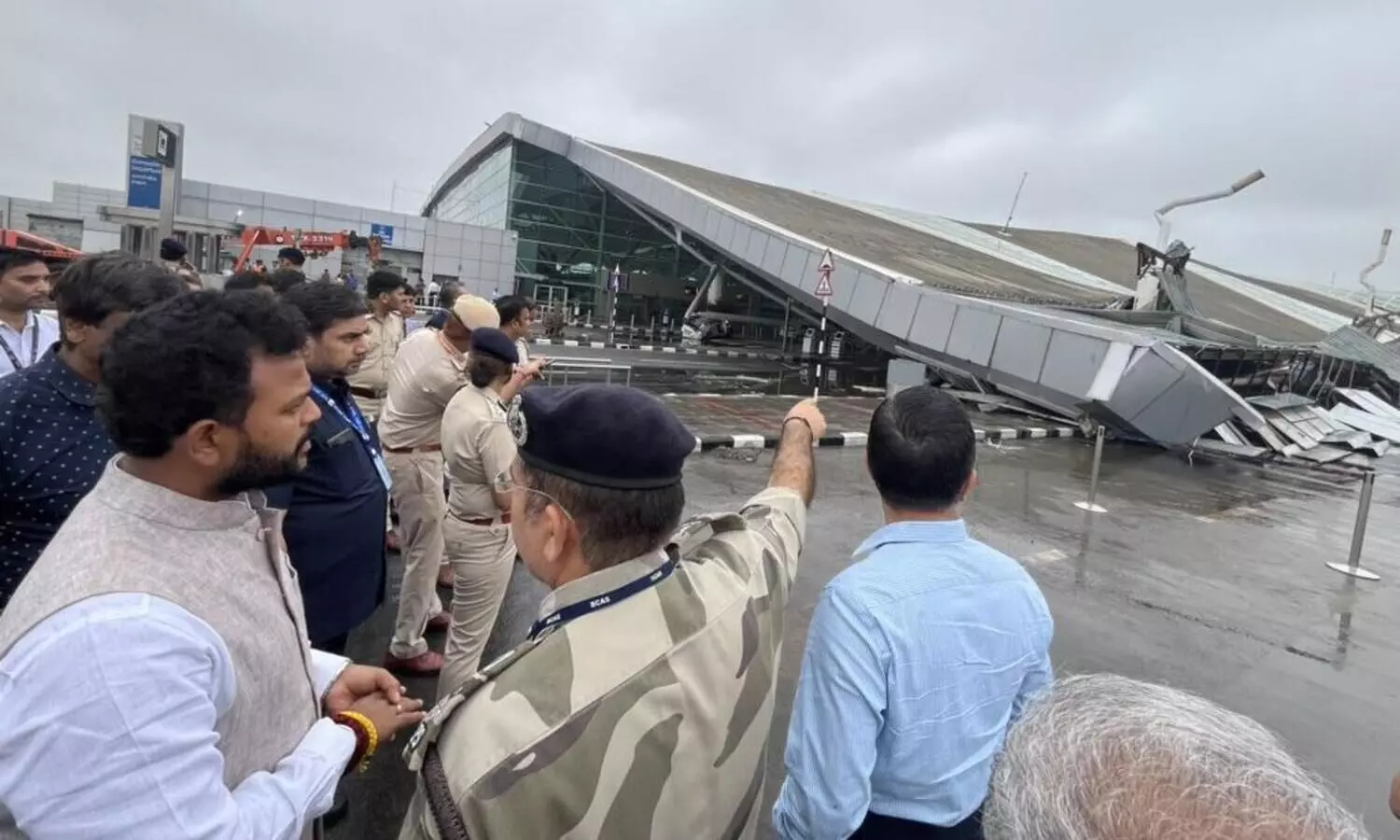This catastrophe highlights a flagrant failure in structural construction and architectural planning, as it also impeded air traffic and resulted in huge financial losses for both airlines and passengers. Rainwater building up until the collapse is a sign of a basic error that cannot be disregarded.
This tragedy is identical to one that happened at the airport in Jabalpur, Madhya Pradesh, a few days ago. There, a newly installed roof collapsed owing to similar defects, but luckily no one was killed. Because of the poor structural design in both instances, there are grave concerns regarding the skill and moral character of the individuals in charge of these projects.

Source: The Assam Tribune
Leader of the Maharashtra Congress Nana Patole has drawn attention to a large fissure in the Atal Setu sea bridge that links Navi Mumbai and South Mumbai. It’s concerning that a stick may be inserted many feet into the crack, even with the political overtones. In a similar vein, water seepage soon became an issue when it rained in Delhi’s Pragati Maidan Tunnel, which was finished at an expense of Rs 920 crore and decorated with murals of the Ganga, Yamuna, and Saraswati. What once served as a sign of advancement has become a white elephant that needs expensive, continuous maintenance to fix its flaws.
These persistent failures highlight a more serious issue with our systemic approach to infrastructure development. Planning and execution both clearly lack quality control and forethought. The people behind these projects don’t appear to be able to imagine the longevity needed for such large-scale endeavors.Infrastructure can be constructed to be robust and long-lasting, as evidenced by historical buildings such as ancient temples and contemporary achievements like the Delhi Metro.
Source: Firstpost
Our infrastructure policies and practices need to be seriously reevaluated in light of the current situation. Tighter accountability, improved project management, and a dedication to quality that guarantees longevity and safety are all necessary. In order to avert more deaths and rebuild public confidence in our infrastructure capabilities, it is imperative that we take action on these issues. Beyond short-term benefits, the goal should encompass a sustainable future in which constructions support future generations without sacrificing safety.
What do you think about this? Comment below.

